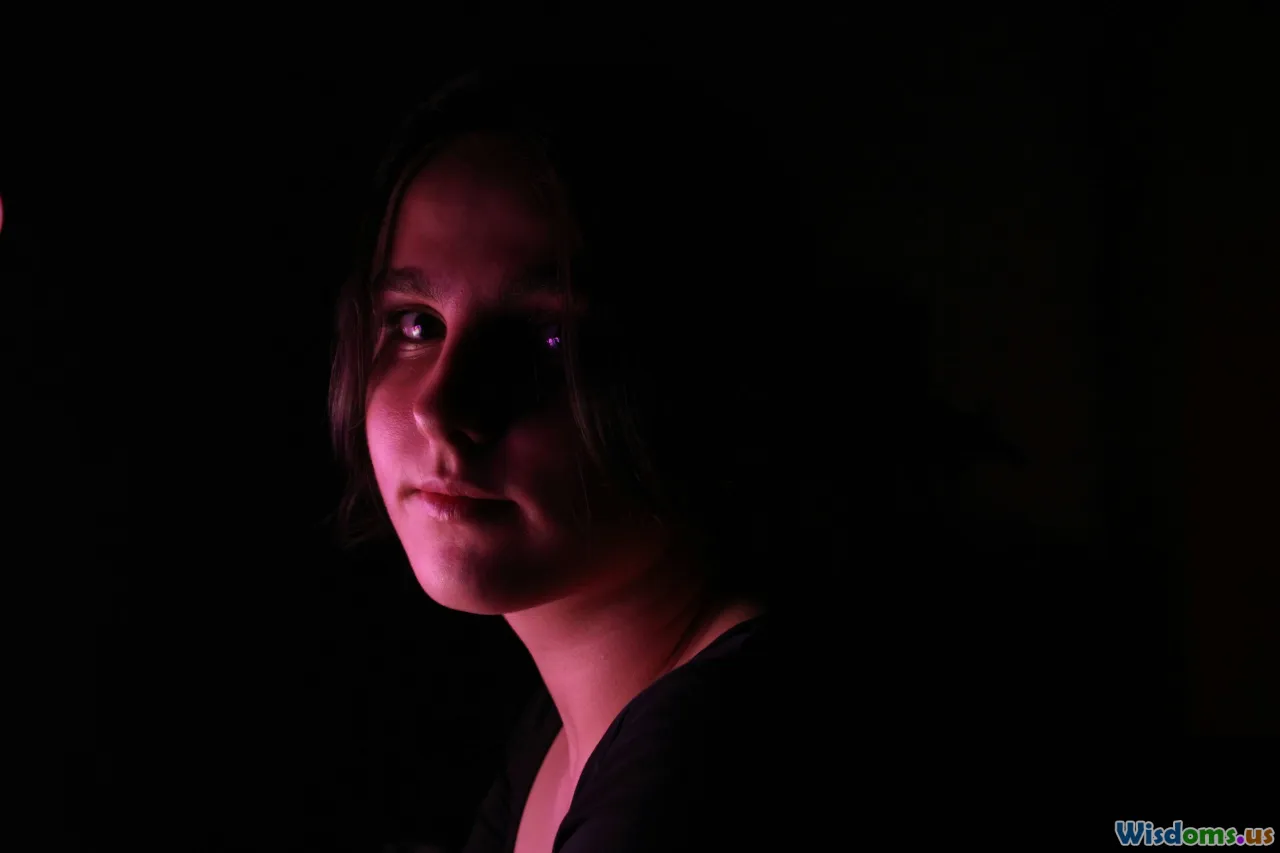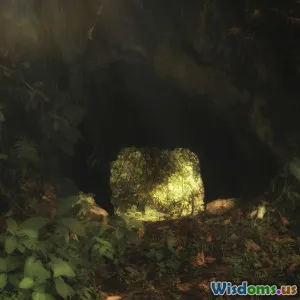
Surviving A Shadow Being Encounter Lessons From Real Stories
15 min read Insights and survival strategies from real-life shadow being encounters, highlighting personal experiences and psychological lessons. (0 Reviews)
Surviving A Shadow Being Encounter: Lessons From Real Stories
Few experiences chill the soul like coming face-to-face—or perhaps, soul-to-soul—with a shadow being. Described for centuries yet still cloaked in mystery, these encounters stretch the boundaries of explanation, leaving the experiencer to grapple with dread and more questions than answers. But amidst the uncertainty, survivors of such encounters have shared stories and strategies that may help others endure the darkness and reclaim peace.
Understanding Shadow Beings: What Are They?

Shadow beings, often described as dark, humanoid silhouettes without distinguishable features, have been reported across cultures and throughout history. From the "Hat Man" to amorphous dark masses, their appearance tends to invoke fear. Psychological experts often attribute such phenomena to sleep paralysis or hypnagogic hallucinations, while paranormal investigators suggest they might be interdimensional entities or the spirits of the dead unable to move on.
Historical Accounts & Cultural Interpretations
Historical accounts show these experiences are not new. For instance:
- The Old Hag Syndrome (Europe): Centuries ago, shadow-like figures were blamed for nocturnal torment, paralyzing sleepers who awoke in terror—a phenomenon now recognized as sleep paralysis. The "old hag" was believed to sit on people’s chests, stealing breath.
- Jinns (Middle East): Described in the Quran and folklore, Jinns are supernatural beings both benevolent and malevolent, often invisible but sometimes manifesting as shadows.
- Churels (South Asia): In Indian and Pakistani lore, these female spirits are said to haunt the night, appearing as amorphous or shadow-like forms seeking revenge.
Such cultural tales highlight common themes—paralysis, overwhelming dread, and the uncanny sense of being watched—suggesting that shadow being encounters are woven into the universal human experience.
First-Hand Stories: What Survivors Report

To gain practical insight, it's crucial to examine real testimonials. Accounts from websites like Reddit’s r/Paranormal, interviews on paranormal podcasts, and archival material from organizations such as the Shadow People Archive all tell a similar tale of sudden, extreme fear, a sense of being observed, and sometimes, direct interactions.
Case Example 1: A Texas man reported awakening to find a dark humanoid figure by his bedroom door. Frozen with an overwhelming sense of terror, he tried to scream but could not move or speak. The being seemed to radiate malice, staring silently for a minute that felt like an eternity before dissolving as suddenly as it appeared.
Case Example 2: A woman in Michigan described recurring nighttime visits from an amorphous black energy that would pin her to the bed. Over multiple visits, she experimented with prayer and visualization—to apparent effect, as the encounters ceased after repeated assertions of personal strength and boundary setting.
What makes these stories particularly compelling are the recurring motifs: sudden paralysis or helplessness, a defined sense of evil or threat, and the eventual empowerment of the individuals involved, often tied to assertion of personal will.
Scientific Perspectives: Sleep Paralysis and the Brain

Before surrendering entirely to the supernatural, it's helpful to weigh scientific context. Sleep researchers estimate that between 8% and 50% of people will experience at least one episode of sleep paralysis, the state between dreaming and wakefulness in which an individual is alert but unable to move. During these episodes, the brain can blend waking reality with dream-based imagery, sometimes leading to terrifying hallucinations.
Key Facts:
- Sleep Ordination: Sleep paralysis primarily occurs as the brain struggles between REM (rapid eye movement) sleep and waking consciousness, creating an overlap of atonia (muscular paralysis) and awareness.
- Hallucinations: Visual and sensory hallucinations—often of a dark, oppressive presence—occur in up to 60% of sleep paralysis cases.
- Fight or Flight: The instinctive threat response intensifies perceived danger, which may explain the sinister reputation of these figures.
Recognizing that many shadow being experiences have neurological roots doesn't diminish their impact. Resolving the episode often comes by regaining control, as we’ll see in lessons from those who have navigated these night terrors.
Lessons Learned: Surviving an Encounter

People who have faced shadow beings and regained their sense of safety echo similar countermeasures—some rooted in psychological techniques, others informed by spiritual or cultural tradition.
1. Asserting Control: The Mental Break
Survivors almost universally describe the moment they broke the being's hold on them by shifting from panic to assertion. Methods include:
- Repetition of Affirmations: Silently or mentally repeating phrases such as, “I am safe,” or, “You cannot harm me,” often unsettled the experience or dispelled the presence.
- Focusing on Movement: Concentrating all energy on moving a single fingertip, toe, or muscle—even slightly—can disrupt sleep paralysis and the accompanying hallucination.
- Grounding Techniques: Consciously connecting with the physical world—by counting objects in the room, focusing on breathing, or reminding oneself it’s a transient neurological event.
2. Spiritual and Cultural Defenses
For many, spiritual traditions offer powerful antidotes:
- Prayer and Mantras: People raised in faith traditions sometimes report instinctively praying or reciting scriptures during encounters, bringing both comfort and perceived protection.
- Physical Talismans: Protective charms, blessed objects, or even salt have been deployed according to a range of beliefs. In some cultures, iron or silver objects are trusted to ward away spirits.
- Boundary Setting: Indigenous and shamanic traditions emphasize verbally or mentally instructing the being to leave one’s space—honoring energetic sovereignty.
Real Story: Diana, a nurse from Brazil, recalled a night terror involving a black mass suffocating her. She mentally shouted at the presence to leave in Portuguese, invoking her grandmother's blessings. The shadow dissolved, not returning in subsequent years.
3. Seeking Support and Validation
Isolation exacerbates trauma. According to clinical therapists, discussing encounters—even those that defy rationality—helps integrate the experience and reduce ongoing anxiety.
- Join Forums: r/Paranormal, the Shadow People Archive, and Facebook support groups allow safe sharing of experiences.
- Therapist Consultation: These episodes can trigger lingering anxiety, stress, or insomnia. Validating mental health needs is not only necessary, it's brave.
4. Environmental Changes
Small adjustments to the sleep environment have demonstrable effects:
- Sleep Hygiene: Regular schedules, limitation of blue light before bed, and the removal of stressors can reduce episodes.
- Physical Safety: Installing nightlights or moving beds away from mirrors (thought by some traditions to act as portals) can bring psychological security.
Comparing Real vs. Imagined Encounters

Is every shadow being encounter a figment of the brain, or is something more supernatural at work? The answer likely depends on worldview, but comparison of cases offers clarity.
- Duration: Experiences rooted in sleep paralysis usually last seconds to a few minutes, whereas reported hauntings or repeated sightings during full wakefulness may signal other causes (from environmental factors to genuine paranormal activity).
- Physical Traces: Genuine shadow being reports sometimes include environmental anomalies—cold spots, malfunctions of electronic devices, or the feeling of being physically touched. Scientific explanations could involve drafty architecture or electromagnetic fields, but in rare cases, patterns repeat across witnesses in the same place.
- Witness Consistency: The more witnesses, the greater the level of credibility given, especially when descriptions align despite no prior discussion.
This kind of analysis, applied to your own experience, can help separate physiological explanations from the unknown, allowing a tailored response.
When Dark Turns Dangerous: Recognizing Warning Signs

While most encounters end with the being vanishing and the survivor left shaken but unharmed, a small subset of reports escalate into ongoing distress. Psychological literature warns to watch for these red flags:
- Repeated Paralysis Episodes: Chronic episodes could indicate an underlying sleep or anxiety disorder requiring medical assessment.
- Physical Harm: While most harm is psychological, reports—such as unexplained scratches or bruises—deserve thorough medical and environmental investigation.
- Obsessive Thought Patterns: If preoccupation with shadow beings disrupts daily life, mental health intervention is critical. Trained specialists can help process trauma and build coping strategies.
In spiritual circles, physical markings and ongoing visits are seen as escalation points requiring ritualistic or energetic cleansing. These might involve smudging (burning sage), use of protective symbols, or ceremonies with trained practitioners.
Building Resilience: Moving Forward After an Encounter

For many, surviving a shadow being encounter marks a transformative life event—one they carry long after the original fear has faded. Often, it catalyzes growth and introspection.
Practical Steps Toward Recovery:
- Journaling: Recording the details of the encounter builds self-awareness and can reveal triggers or patterns over time.
- Routine Mindfulness Practice: Anxiety ebbs with regular meditation, grounding exercises, and breathwork. Mindfulness can also return the feeling of control.
- Creative Expression: Art, poetry, and music serve as powerful outlets, turning past fear into catharsis and self-discovery.
- Reclaiming Space: Rearranging furniture, cleansing with incense or sound baths, or inviting trusted friends for a gathering can symbolically and emotionally reclaim the place of the encounter.
"The first night after it happened, I could barely sleep. But I found strength each day—found meaning in every breath," as recounted by Alex, a survivor whose online journal inspired many.
Lessons We Can All Use: Empowerment in the Face of the Unknown

Encounters with shadow beings straddle science and the supernatural, but every survivor’s journey echoes resilience, curiosity, and hope. These lessons aren't reserved for believers or the traumatized; they serve anyone grappling with the unknown:
- Pause, Assess, Act: In any moments of overwhelming fear—supernatural or otherwise—ground yourself first. Focus on breath, then choose a response, not a reaction.
- Seek Community: Shared experience eases suffering. Community—whether through storytelling, therapy, or faith—restores agency.
- Honor Intuition: Whether an experience stems from mind or mystery, listen to your gut. Taking proactive steps, setting boundaries, and self-validating emotions are transformative acts.
While shadow beings may lurk on the edges of our perception, human courage shines ever brighter. If you or someone you know has encountered the shadows in any form, know that you are not alone—and what lies in darkness can still be survived and understood.
Rate the Post
User Reviews
Other posts in Mental Health
Popular Posts

















